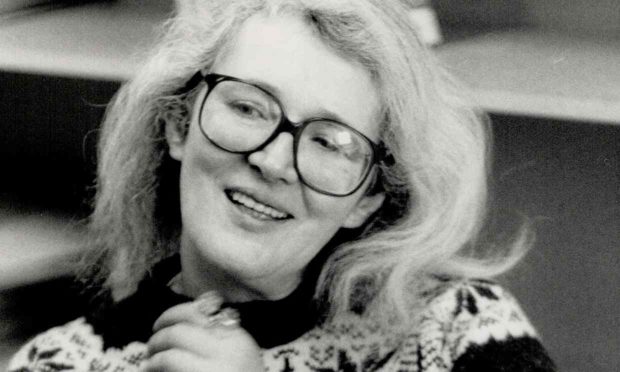Review
Angela Carter was a writer, novelist, and journalist who rejected being identified with a particular group. She wrote at a time in which English literature was dominated by moderate social realists, but she played with poor reputation genres and made her own mixtures, by giving free rein to fantasy: gothic horror, science-fiction, fairy tales...
Justifications
- Subversive writer who experimented with female roles.
- Journalist.
- Cinema, TV, and radio writer.
- Essayist on feminism and pornography.
Biography
Angela Carter was born in Eastbourne, in Southern England, and during World War II she lived in Yorkshire, with her grandmother. When the war finished, her family moved to London, where her father found a job as journalist. At the beginning, she was a shy child who grew up in an extremely protective environment. Afterwards, she became a rebel teenager who wanted to reaffirm her identity through fashion, swear words, and cigarettes during a time in which all that was considered as depraved. Soon, she started working as journalist, specialised in music. It allowed her to escape from her parents' protective world, and to meet her first husband, Paul Carter.
She published her first novel in 1966, Shadow Dance, and in her following novel, The Magic Toyshop (1967), we can observe her interest in oral tradition tales and in psychoanalysis. Later, she won the Somerset Maugham Award, endowed with five hundred pounds, with her work Several Perceptions (1968), which she used for travelling to Japan, a country that changed her life and her work. At that time, she left her husband, twelve years after a difficult marriage, and she moved to Tokyo for two years. There, she worked as waitress while she reflected her impressions in journal articles.
In 1972, she returned to England, where she wrote much of her work and became involved in the emerging women's liberation movement. In 1970s and 1980s, she worked in several universities in the United Kingdom, the United States, and Australia.
Her work is categorised as fantastic literature, but she always rejected labels, and thought that being integrated meant losing freedom. Carter was interested in deconstructing the typical roles and structures that mark our existences, especially those of gender. Her innovative narrative proceedings and her usual references to other texts link her with Anglo-Saxon postmodernism, as well as to French authors like Sade or Bataille, although her vision of feminism and pornography earned her enmity. Her style is funny, seductive, terrifying and brutal, and it is surrounded by a halo of intelligence and beauty. One of the central topics for Carter was the contingency of identity. She thought that nobody was true or false, we just played different roles if we exercise power or if power is exercised over us. That is why her characters seem to be disguised by their personalities. Regarding gender roles, she explicitly stated several times that femininity was a social construct.
Two of her works were adapted for cinema: The Magic Toyshop, in 1987; and her short story The Company of Wolves, for a namesake film in 1984. She also adapted many of her short stories for the radio.
She died of cancer when she was 51 years old.
Gordon, Edmund (2016): Angela Carter far from the fairytale, The Guardian, <https://www.theguardian.com/books/2016/oct/01/angela-carter-far-from-fairytale-edmund-gordon> (última visita 15/04/2022)
Works
Novels:
Shadow Dance(1966)
The Magic Toyshop (1967)
Several Perceptions(1968)
Heroes and Villains (1970)
Love (1971)
The Infernal Desire Machines of Doctor Hoffman(1972)
The Passion of New Eve (1977)
Nights at the Circus (1984)
Wise Children (1993)
Short fiction collections:
Fireworks: Nine Profane Pieces (1973)
The Bloody Chamber (1979)
Black Venus (1985)
American Ghosts and Old-World Wonders (1993)
Burning your Boats (1995)
Poetry collections:
Five Quiet Shouters (1966)
Unicorn (1966)
Unicorn: The poetry of Angela Carter (2015)
Drama writings compilations:
Come Unto These Yellow Sands: Four Radio Plays (1985)
The Curious Room: lays, Film Scripts and an Opera (1996)
Children's books:
The Donkey Prince (1970)
Miss Z, the Dark Young Lady (1979)
Comic and Curious Cats (1979)
Moonshadow (1982)
Sea-cat and Dragon King (2000)
Non-fiction:
Fireworks: Nine Profane Pieces (1974)
The Sadeian Woman and the Ideology of Pornography (1979)
Nothing Sacred: Selected Writings (1982)
Expletives Deleted: Selected Writings (1992)
Shaking a Leg: Collected Journalism and Writing (1997)
As editor:
Wayward Girls and Wicked Women: An Anthology of Subversive Stories (1986)
The Virago Book of Fairy Tales (1990) a.k.a. The Old Wives’ Fairy Tale Book
The Second Virago Book of Fairy Tales (1992). a.k.a. Strange Things Still Sometimes Happen: Fairy Tales from Around the World (1993)
Angela Carter’s Book of Fairy Tales (2005)
Works forradio:
Vampirella (1976)
Come Unto These Yellow Sands (1979)
The Company of Wolves (1980)
Puss-in-Boots (1982)
A Self-Made Man (1984)
Television:
The Holy Family Album (1991)
Omnibus: Angela Carter’s Curious Room (1992)
Didactic approach
Angela Carter can be studied in language subjects, as a practice for reading and comprehension.
It is advisable to choose the highest years, from third of ESO to university, in order to have students who are mature enough to understand Carter's perspective.
Documents
